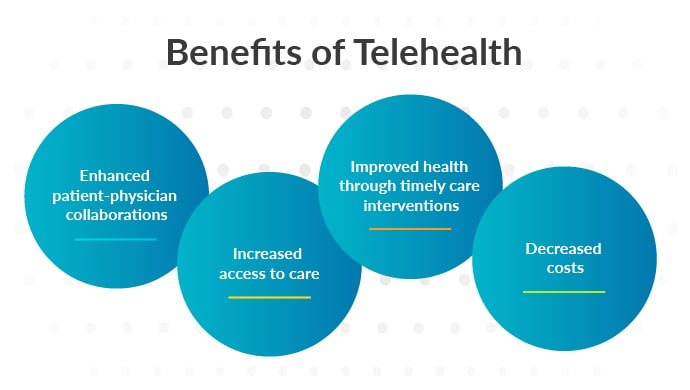In 2020, Medicare Advantage (MA) began covering telehealth visits. This change was driven in large part by the COVID-19 pandemic.
According to a survey conducted by The Harris Poll last May, nearly half (42%) of Americans have reported utilizing telehealth services. These numbers no doubt increased through the second half of 2020 and into 2021.
The expansion of telehealth options provides new opportunities to improve health outcomes for MA members but only if done right. Many MA members manage multiple complex conditions, making their care experience challenging at best and confusing at worst.
Adding telehealth will only simplify and improve the member experience if it’s paired with strong care coordination ensuring that they’re accessing it at the right times and for the correct reasons.
Read Next: Why Telehealth Is Essential: What You Need To Know To Care For Patients Wherever They Are
The benefits of telehealth

Telehealth services help patients connect with providers over the phone and through online apps and services. But the American Academy of Family Physicians (AAFP) advises these services need to be integrated and paired with a physical source of primary care to have the greatest outcomes.
When this is done, the benefits are substantial:
- Increased access to care: Telehealth makes it significantly more convenient to visit with either a primary care provider or a specialist. As a result, members are more likely to seek the care they need.
- Enhanced member-physician collaborations: Members spend significantly more time with their provider in a telehealth visit. According to Health IT Answers, during a telehealth visit “95 percent of the time spent by the patient is face-to-face with the doctor, compared to less than 20 percent of a traditional visit.” That leaves significantly more time to build stronger relationships and get to the bottom of care needs.
- Improved health outcomes by enabling timely care interventions: Increased and more convenient access — combined with stronger collaborations between members and providers — means that necessary interventions will happen sooner, increasing the likelihood of positive health outcomes.
According to the AAFP, not only are outcomes improved with the use of telehealth, but it can also “decrease costs when utilized as a component of, and coordinated with, longitudinal care.”
CMS rules and expansion of coverage for telehealth
Given the significant benefits telehealth can provide, it’s important to have a clear understanding of what CMS coverages are. With this understanding, payers can map a strategy for telehealth that maximizes the benefits to their members.

In their final rule fact sheet published in May 2020, they expanded coverage to include visits for:
- Psychiatry
- Dermatology
- Cardiology
- Primary Care
This telehealth coverage will be crucial for ensuring improved outcomes, particularly for Medicare patients and those living in rural areas that might otherwise delay or altogether not access these types of care. The new rule also changed the requirement for network standards in rural areas from 90% of members required to live within a certain distance, to 85%, effectively encouraging more plan options.
Integrating telehealth into primary care
 Primary care should be a patient’s first stop for any medical issue and, ideally, the vast majority of care should be provided in this setting. But, primary care offers another very important benefit. It ensures that when additional care is needed, members are referred to appropriate specialists and then followed up with after their visit.
Primary care should be a patient’s first stop for any medical issue and, ideally, the vast majority of care should be provided in this setting. But, primary care offers another very important benefit. It ensures that when additional care is needed, members are referred to appropriate specialists and then followed up with after their visit.
In an interview with Chief Medical Officer Dr. Kevin Wang, he discussed the value of care coordination and primary care —
“You have to have a model in which primary care is the hub that drives the right referrals when needed but also quarterbacks the patient's care … The only person equipped to coordinate a patient’s care is the primary care provider and their care team … If a patient needs health coaching in order to self-activate some healthy habits, for example, then we're going to have our health coach follow up ...”
This type of care coordination will be especially important in a telehealth setting when members can just log off and go on with their day.
Care coordination not only helps members get appropriate care, it reduces the amount of system waste that occurs when people go directly to specialty care, perhaps out of confusion or misdirection. This can lead to unnecessary visits, duplicate testing and procedures, as well as wasting valuable time.
Successful telehealth implementation
Successful telehealth implementation is most effective when payers provide care coordination through primary care, and this environment should mimic an on- or near-site clinic for best results, according to AAFP.
Want to learn more about how to effectively implement telehealth for your members? Check out our in-depth telehealth guide that unpacks what telehealth is, how to successfully adopt it, and how it can improve access and outcomes for your members.

This post was originally published on March 4, 2019 under the title Calibrating Coordinated Care With Telehealth Services. It was revised and updated on February 2, 2021 to ensure relevancy of information.